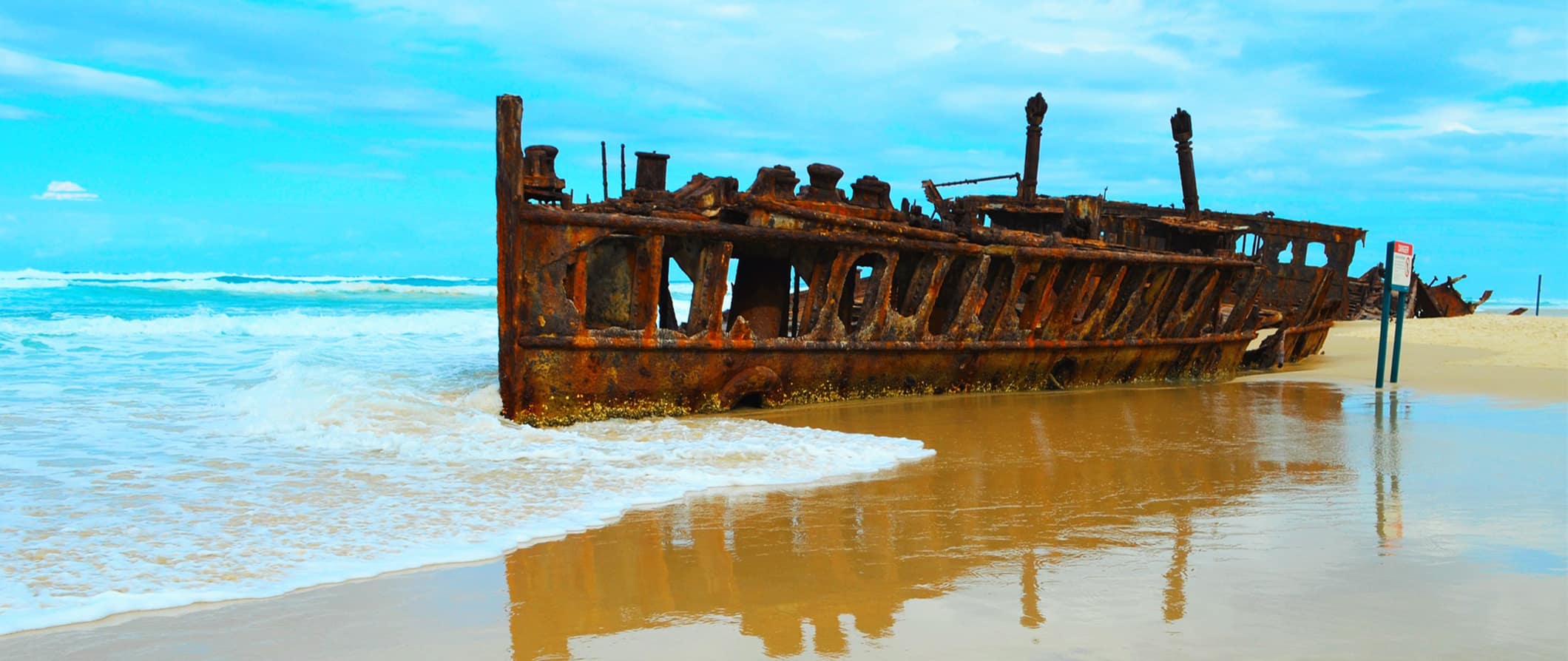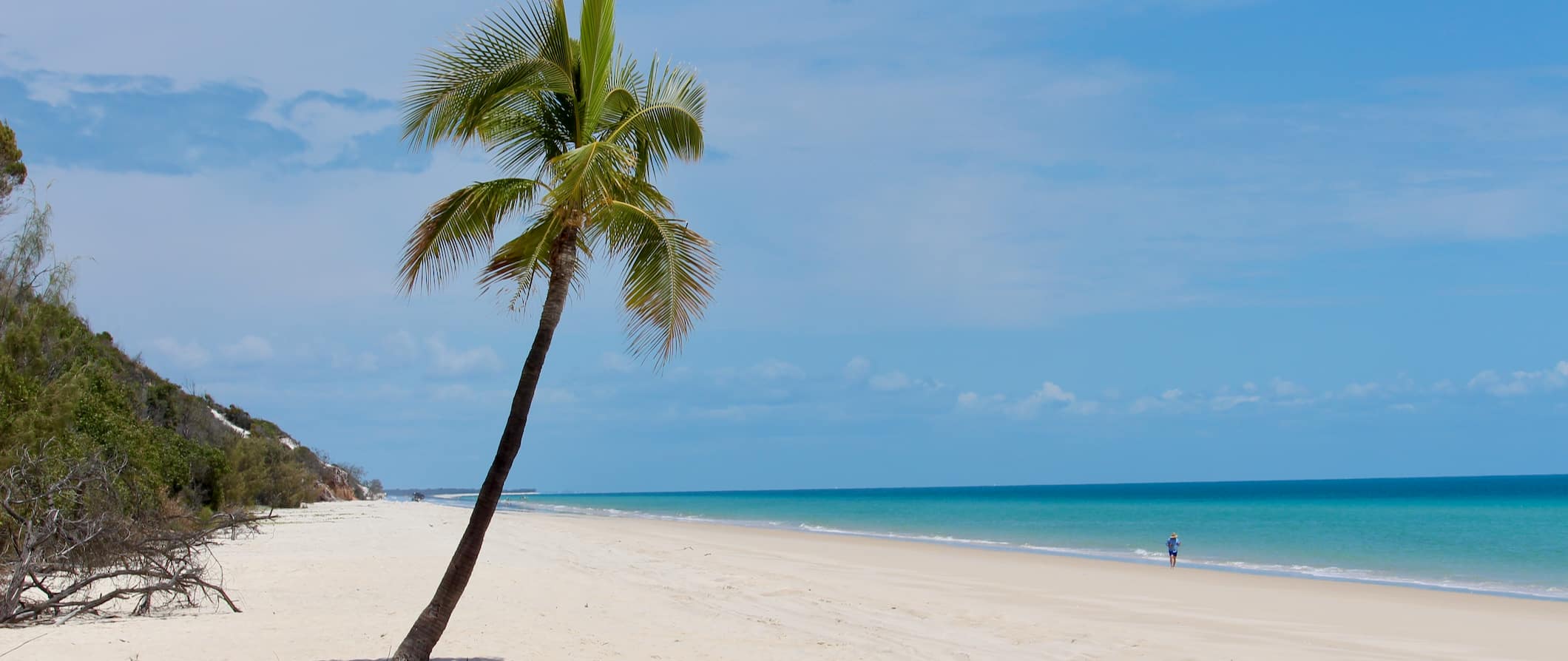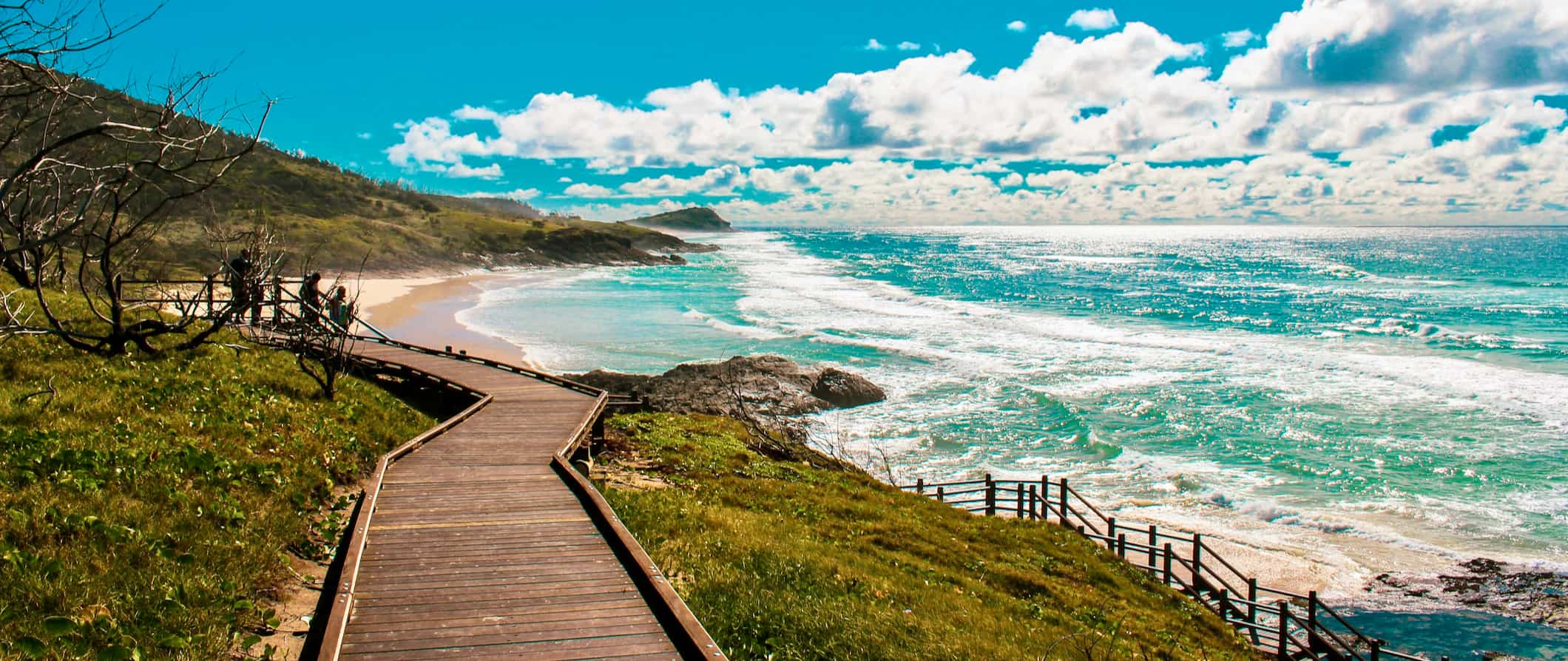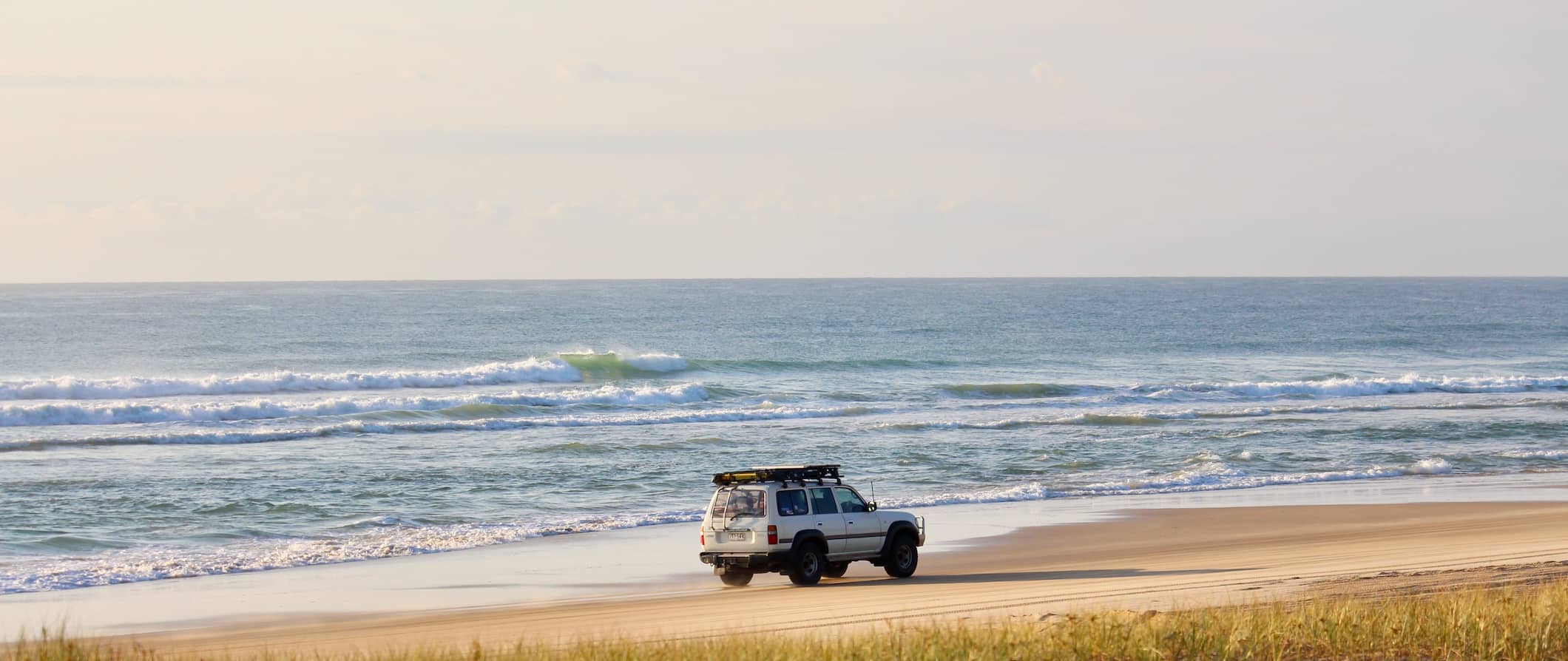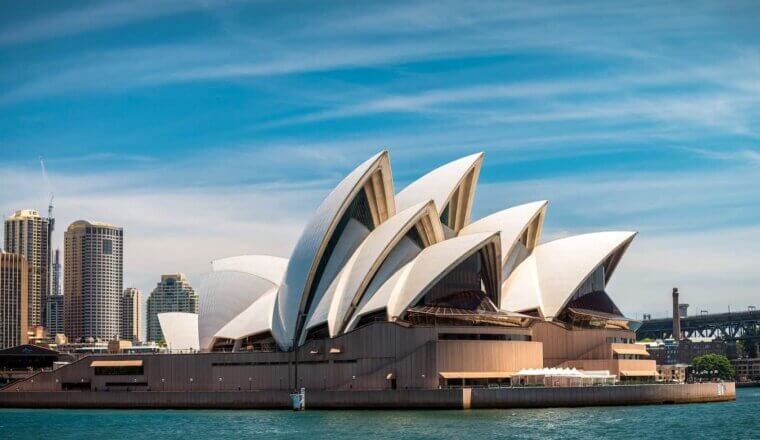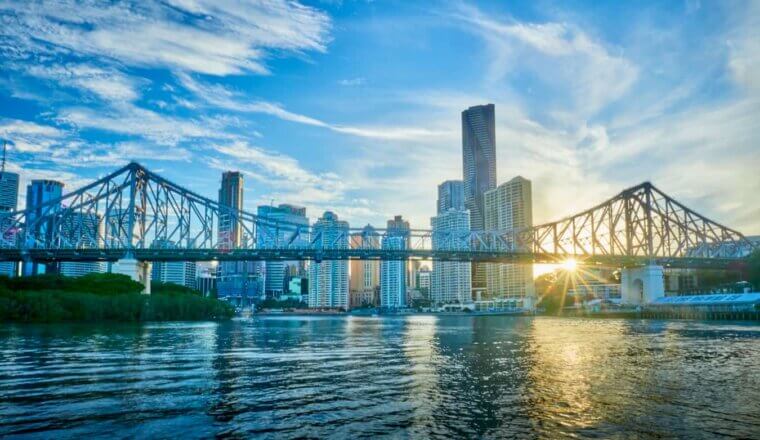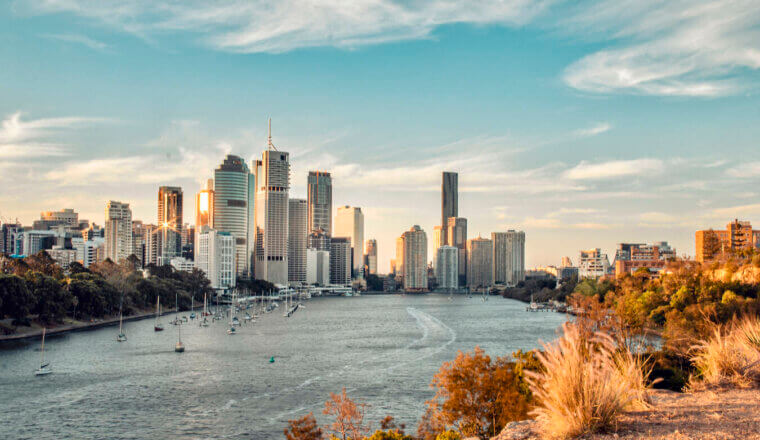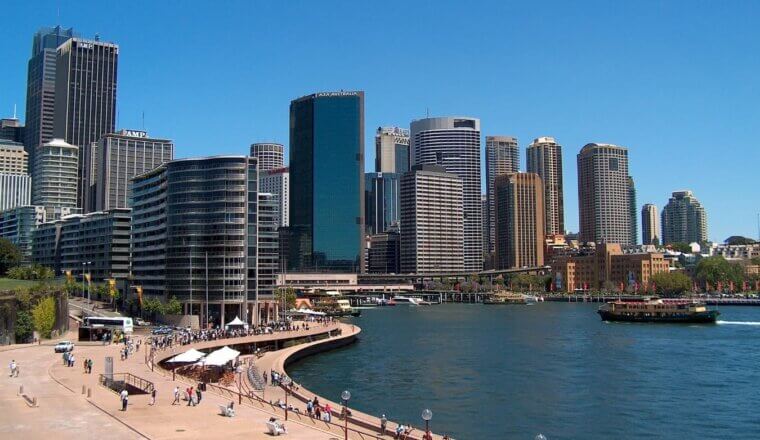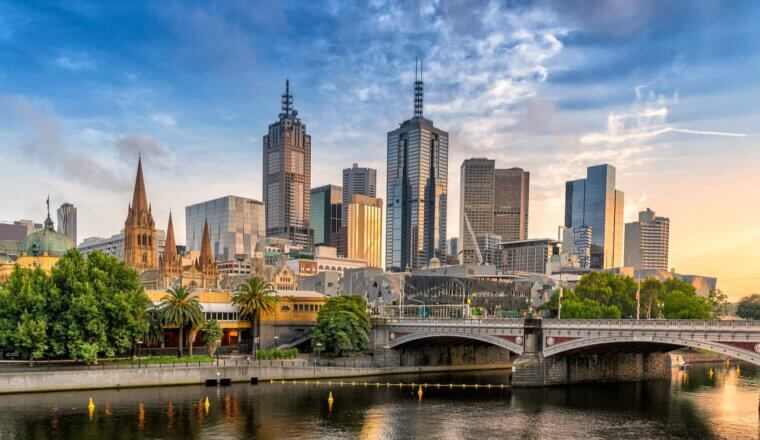Fraser Island (also known as K’gari) in Queensland is the largest sand island in the world. A UNESCO World Heritage Site, it’s a place of exceptional beauty, with long uninterrupted white beaches flanked by striking sand cliffs and over 100 freshwater lakes. It was originally named “Great Sandy Island” by the Europeans who “discovered” it — which is a fitting name!
Visiting Fraser Island is one of the “must-dos” on the Australian travel trail and you’ll find a ton of backpackers, campers, and day-trippers here. But you’ll also find a lot of locals here too, especially those that love 4×4 drives and multi-day camping trips.
You definitely don’t want to skip this place (but avoid the weekends when locals crowd the campgrounds and the small island seems like a small city) but you only need a night or two here. The island is small.
This Fraser Island travel guide can help you plan your trip, save money, and ensure you make the most of your time in this beautiful part of Australia!
Table of Contents
Top 5 Things to See and Do in Fraser Island
1. See Lake MacKenzie
The jewel of the island, Lake MacKenzie, is a large lake with crystal blue waters and shimmering white sand. Spanning 150 hectares (370 acres), it’s known as a “perched” lake, meaning it exists above the water table and is made up of pure rainwater only. The sands around the lake are soft and white but very little plant and animal life can exist in the lake due to the water content. There are picnic tables around the lake so pack a lunch and lounge away the day. It’s free to visit.
2. Visit the Maheno Shipwreck
In 1935, the retired passenger steamer SS Maheno was being towed to Japan for scrap when a storm forced it ashore. The ship was active in World War I (it was converted to a hospital ship for the war) and was used for bombing tests during World War II. Today, it’s a rusty hunk of metal that’s best seen during low tide. On Anzac Day (the holiday that commemorates fallen soldiers in Australia and New Zealand), services are held here. It’s free to visit.
3. Relax at 75 Mile Beach
This length of beach stretches along the entire eastern side of the island and is considered the main road. Many of the island’s best sights, such as the Coloured Sands (a section of rock that’s all different colors due to their mineral content), Eli Creek, and the Maheno Ship Wreck can be seen along the beach. You can see the entire stretch from Indian Head or up close while 4WD driving.
4. See Indian Head
The rocky outcrop at the northern end of 75 Mile Beach is great to climb. It was formed by volcanic activity millions of years ago and offers excellent views out over the water where you can spot sharks, rays, turtles, and more. It’s only a 20-minute walk to the top. Just be sure to wear appropriate footwear as there are loose rocks and sometimes the trail is slippery. The view is worth it though!
5. Explore Lake Wabby
Wabby is a dark-green colored lake about 20 minutes from the beach. Beside the lake is a large sand dune that is slowly encroaching upon the water (the dune will eventually swallow the lake). The lake is 12 meters deep (39 feet), making it the deepest lake on the island. Freshwater turtles and fish can sometimes be seen swimming in the lake too. It’s free to visit and there is camping permitted nearby.
Other Things to See and Do in Fraser Island
1. Bathe in Champagne Pools
North of Indian Head, these rock pools provide a safe place to bathe. Their name is derived from the froth created when waves break over the edge and into the pools. You can find the pools between Waddy Point and Indian Head along 75 Mile Beach. Just watch for big waves, which periodically slam into the pools.
2. Relax at Eli Creek
This freshwater creek midway along the main beach is where swimmers can float down with the current (bring an inner tube if you can). A boardwalk provides easy access to the top of the creek. It’s also a popular spot for picnicking.
3. Visit the Hammerstone Sandblow
This huge sand dune will make you feel like you are in a desert. It just seems to go on forever and begins in a section of rainforest and ends at Lake Wabby. This trek is definitely better–suited for those who are athletic due to the softness of the sand. It’s about a 4.6-kilometer (2.8-mile) trek (return). Eventually, the dune will smother the lake as it continues to move and be blown by the winds.
4. See Wanggoolba Creek
In the middle of the rainforest, the Wanggoolba Creek runs crystal clear and is surrounded by rare King Ferns that are said to have existed here for over 2,500 years! Unfortunately, due to human destruction, only 60 are left. This site is sacred to the Butchulla people as a birthing area for women. It’s peaceful and the trail along the creek makes for a serene walk.
5. Look for dingos
Fraser Island has a huge dingo population (dingos are medium-sized wild dogs that can be found all over Australia). There are up to 30 packs on the island, each with 3-12 members. They’re beautiful animals, native to Australia, and a protected species. Seeing them in their natural habitat is certainly a privilege — and no, you shouldn’t be afraid of them (but you shouldn’t approach them either). Observe from afar, and enjoy their presence.
6. Go fishing
While fishing in the freshwater lakes is prohibited, you’re free to fish in the ocean. During the warmer months, dart and mackerel are plentiful while tuna and swallowtail can be caught all year round. You can fish from the beach or do a half-day, full-day, or multi-day excursions. Prices start around 300 AUD per person for full-day fishing charters.
7. Take a 4WD tour
One of the best (and most popular) ways to explore the island is by renting a 4WD vehicle and cruising over the beaches. You can rent a jeep for a self-drive tour or join a guided tour for 2 or 3 days — whatever works for you and your budget! Expect to pay between 455-615 AUD for a rental or tour (rentals are the cheaper option, of course, as you can split the price between people while tours generally cost 425 AUD per person).
For more information on other places in Australia, check out these guides:
Fraser Island Travel Costs
Hostel prices – There are no hostels on Fraser Island but there are hostels nearby on the mainland (either in Hervey Bay or Rainbow Beach) with dorm beds costing 24-32 AUD per night. Private rooms start at 90 AUD per night. Free Wi-Fi is standard and most hostels also organize various trips and tours to the island.
The majority of budget travelers camp out on Fraser Island, which you can do all over the island. You’ll need a camping permit before you go, which costs around 8 AUD per night.
Budget hotel prices – The few hotels that exist on the island are pricey. Budget accommodation on the mainland nearby is also few and far between, with cheap hotels starting around 100 AUD per night (though most hotels are double that). Expect basic amenities like free Wi-Fi, AC, coffee/tea makers, and some even have pools.
If you’re booking through a search engine like Booking.com, make sure the accommodation is actually on the island if that’s a priority for you. Most searches include the mainland so, if you’re not careful, you might book in the wrong location.
Food – You can eat at the resort restaurants if you’re not a guest, but even the most casual places cost 25-50 AUD for an entree. Unless you’re here to splurge, avoid eating at the resorts.
Since most people come here to camp, they bring there own food. A week’s worth of basic staples (pasta, rice, produce, etc.) costs around 75-90 AUD. You’ll also need to bring your own water.
Backpacking Fraser Island Suggested Budgets
On a backpacker budget, you can visit Fraser Island for around 35 AUD per day if you camp and don’t rent a vehicle. If you’re booking a 4WD for four people, camping, and cooking at your campsite, expect to pay around 135 AUD per person. On this budget, you’ll mostly do free activities like swimming, hiking, and relaxing at the beach. Add 10-15 AUD to your daily budget if you plan on drinking.
On a mid-range budget of 450 AUD per day, you can hop on a two-day tour. This will be fairly no-frills but it does come with resort accommodation. It also covers all the big expenses like the ferry crossing and getting around. I recommend Kingfisher Tours or Fraser Explorer Tours.
On a “luxury” budget of 525 AUD per day or more, you can stay at one of the resorts, rent a 4WD to get around (and split the cost), eat at restaurants for all your meals (some resorts include food too), and enjoy a few drinks. This is just the ground floor for luxury though. The sky is the limit!
Fraser Island Travel Guide: Money-Saving Tips
Fraser Island is not a cheap place to visit, especially if you’re staying at a resort or doing a tour. Fortunately, there are a few ways to keep your costs down:
- Drink goon (box wine) – Goon is infamous on the Australian backpacker hostel trail. This cheap box of wine is the best way to drink, get a buzz, and save a lot of money at the same time.
- Cook your food – The best way to reduce your costs is to cook as many meals as possible. Pick up all your supplies before you cross over to the island (including water).
- Split expenses for a 4WD – You need to have a 4WD to explore Fraser Island, but they aren’t cheap. Make some new friends to split expenses with and you’ll save a fortune.
- Book tours as a package – If you’re traveling solo, an organized tour is actually one of the more affordable ways to see Fraser Island. Ask for discounts and deals to lower costs further.
- Go during low season – Prices are always more expensive during peak season. Consider visiting in the winter to beat the crowds and pay less.
- Camp – Camping is less than 10 AUD per night. You can rent tents and gear for around 35 AUD on the mainland. It’s the most budget-friednly way to visit the island!
- Bring a reusable water bottle – You need to bring your own water to Fraser Island so bring a reusable water bottle. LifeStraw makes a bottle with a built-in filter to ensure your water is always clean and safe.
Where to Stay on Fraser Island
Here are some recommended places to stay on/near Fraser Island:
- Cathedral Camping Grounds (on Fraser Island)
- Kingfisher Bay Resort (on Fraser Island)
- Flashpackers Hervey Bay (Hervey Bay)
- Woolshed Eco Lodge (Hervey Bay)
- Freedom Hostels Rainbow Beach (Rainbow Beach)
How to Get Around Fraser Island
Aside from hiking, the only ways to get around the island are with a 4WD vehicle or as a part of a guided tour. Rentals start at 455 AUD per day, with prices lowering the longer you rent (if you rent a 4WD for five days it’s just 150 AUD per day).
There are lots of guided tour options for backpackers and hostels on the mainland will often help you arrange your booking. They can range from day trips to multi-day trips. They’re not cheap, but they cover all the essentials: your crossing to the island, accommodations, activities, etc.
Expect to spend around 205-235 AUD (return) to take your 4WD vehicle to/from the island via the ferry. Be sure to book your ferry in advance so you can be sure you have space. There is also an extra fee for passengers (7 AUD per person).
When to Go to Fraser Island
Fraser Island is warm year-round. Winter is from June to August, with temperatures ranging from 14-25°C (55-77°F). It’s driest during this time, so the chances of experiencing rainfall are slim.
The summer season is from September until the end of April, when temperatures climb into the 30s°C (high 80s°F). Because the island has a subtropical climate, occasional storms are sometimes a risk. Be prepared for ferry delays or getting stuck on the island (have some spare cash on hand just in case).
While the summer months will be the warmest, they will also be the busiest. Consider going in the shoulder season so you can enjoy warmer temperatures without the crowds. Prices are cheaper in the off-season too; even the fare for the ferry is lower during this time. Also, visiting during the week is always less busy than visiting on the weekend.
How to Stay Safe in Fraser Island
Fraser Island is an incredibly safe place to backpack and travel. Most incidents tend to occur because visitors are not used to the island’s unique climate and wilderness. Be sure you have plenty of sunscreen and stay as hydrated as possible. If you’re hiking, be on the lookout for snakes and spiders. If you’re bitten, seek immediate care.
If you’re swimming, heed any red and yellow flags. Yellow flags indicate swimming conditions may be dangerous; red flags mean the beach is closed.
There’s a chance you may encounter wild dingos on your visit — keep your distance, respect their territory, and don’t run away. The Department of National Parks advises facing the dingo(s) and backing away slowly, and if you’re traveling with another person, stand back to back.
If you experience an emergency, dial 000 for assistance.
The most important piece of advice I can offer is to purchase good travel insurance. Travel insurance will protect you against illness, injury, theft, and cancellations. It’s comprehensive protection in case anything goes wrong. I never go on a trip without it as I’ve had to use it many times in the past. You can use the widget below to find the policy right for you:
Fraser Island Travel Guide: The Best Booking Resources
These are my favorite companies to use when I travel. They consistently have the best deals, offer world-class customer service and great value, and overall, are better than their competitors. They are the companies I use the most and are always the starting point in my search for travel deals.
- Skyscanner – Skyscanner is my favorite flight search engine. They search small websites and budget airlines that larger search sites tend to miss. They are hands down the number one place to start.
- Hostelworld – This is the best hostel accommodation site out there with the largest inventory, best search interface, and widest availability.
- Booking.com – The best all around booking site that constantly provides the cheapest and lowest rates. They have the widest selection of budget accommodation. In all my tests, they’ve always had the cheapest rates out of all the booking websites.
- Get Your Guide – Get Your Guide is a huge online marketplace for tours and excursions. They have tons of tour options available in cities all around the world, including everything from cooking classes, walking tours, street art lessons, and more!
- Rome2Rio – This website allows you to see how to get from point A to point B the best and cheapest way possible. Just enter your departure and arrival destinations and it will give you all the bus, train, plane, or boat routes that can get you there as well as how much they cost. It’s one of the best transportation websites out there!
- SafetyWing – Safety Wing offers convenient and affordable plans tailored to digital nomads and long-term travelers. They have cheap monthly plans, great customer service, and an easy-to-use claims process that makes it perfect for those on the road.
- LifeStraw – My go-to company for reusable water bottles with built-in filters so you can ensure your drinking water is always clean and safe.
- Unbound Merino – They make lightweight, durable, easy-to-clean travel clothing.
- Top Travel Credit Cards – Points are the best way to cut down travel expenses. Here’s my favorite point earning credit cards so you can get free travel!
Australia Travel Guide: Related Articles
Want more info? Check out all the articles I’ve written on Australia travel and continue planning your trip:
